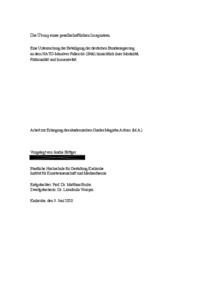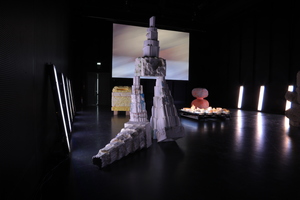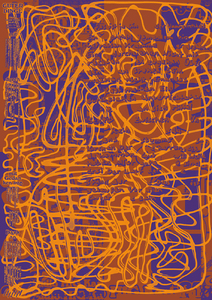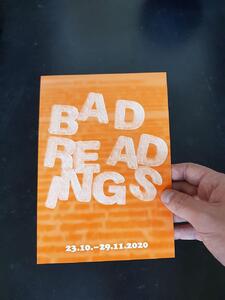Jandra Böttger
| Name | Jandra Böttger |
4 Inhalte
- Seite 1 von 1
Die Übung eines gesellschaftlichen Imaginären
- Titel
- Die Übung eines gesellschaftlichen Imaginären
- Untertitel
- Eine Untersuchung der Beteiligung der deutschen Bundesregierung an dem NATO-Manöver Fallex 66 (1966) hinsichtlich ihrer Modalität, Fiktionalität und Immersivität.
- Autor/in
- Beschreibung (de)
- „How do imaginaries claim normativity? A society can only function if enough people envision the same imaginary, says Castoriadis. I claim, that new imaginaries need to be exercised, if they are to claim normative power. This paper investigates a homogenization process of a social imaginary: In the 1966 German civil defense exercise Fallex 66, 33 members of the West German parliament simulated the at this point intensely disputed Emergency Laws. This paper argues that the fusion of fictional and real elements in the exercised scenario, combined with a bodily and affective immersion in a bunker setting had the power to shift a social imaginary. By presenting the Emergency Laws in a conservative patriarchal imaginary landscape, the exercise induces a normative shift in the social perception of the Laws. This paper sheds a leftist light on the struggle, highlighting the political bias of the exercise, as well as giving a new vocabulary to the left critique of that time. With a unique conceptual set-up, this paper investigates the imaginaries transported by and the means of their production in the civil defense exercise. Hereby, I suggest a methodical set for the analysis of social imaginaries at the cutting surface of aesthetics, affect theory, contemporary history, and social philosophy.”
- Beschreibung (en)
- „How do imaginaries claim normativity? A society can only function if enough people envision the same imaginary, says Castoriadis. I claim, that new imaginaries need to be exercised, if they are to claim normative power. This paper investigates a homogenization process of a social imaginary: In the 1966 German civil defense exercise Fallex 66, 33 members of the West German parliament simulated the at this point intensely disputed Emergency Laws. This paper argues that the fusion of fictional and real elements in the exercised scenario, combined with a bodily and affective immersion in a bunker setting had the power to shift a social imaginary. By presenting the Emergency Laws in a conservative patriarchal imaginary landscape, the exercise induces a normative shift in the social perception of the Laws. This paper sheds a leftist light on the struggle, highlighting the political bias of the exercise, as well as giving a new vocabulary to the left critique of that time. With a unique conceptual set-up, this paper investigates the imaginaries transported by and the means of their production in the civil defense exercise. Hereby, I suggest a methodical set for the analysis of social imaginaries at the cutting surface of aesthetics, affect theory, contemporary history, and social philosophy.”
- Kategorie
- Schlagworte
- Datierung
- 3. Juni 2020
- Sprache
- Ort: Institution
- Titel
- Die Übung eines gesellschaftlichen Imaginären
- Projektleiter/in
- Semester
- Studiengang
- Typ der Abschlussarbeit
- Archiv-Signatur
- HfG HS 2020 03
- Externes Archiv
- Importiert am
- 30.03.2025
- Übergeordnete Sets
- 2
- Set enthält
- 0 4
Future Ruins
- Titel
- Future Ruins
- Titel (en)
- Future Ruins
- Untertitel des Projekts/Werks (en)
- Five Monuments for a Human Planet
- Autor/in
- Beschreibung (de)
- "Future Ruins" besteht aus fünf spekulativen Monumenten. Diese Modelle im menschlichen Maßstab setzen sich mit aktuellen soziologischen und geologischen Entwicklungen, mit den Werten und Idealen unserer Zeit auseinander.
- Beschreibung (en)
- "Future Ruins" consists of five speculative monuments. These human-scaled models are dealing with current sociological and geological developments, the values and ideals of our time.
- Kategorie
- Schlagworte
- Datierung
- 28.-30.06.2019
- Mitwirkende
- Material
- Abmessungen
- verschiedene Maße der Modelle
- Ort: Institution
- Ort
- Großes Studio
- Bemerkungen
- HINWEIS
Es wurden alle Anstrengungen unternommen, um die Urheberrechtsinhaber ausfindig zu machen und ihre Erlaubnis für die Verwendung von urheberrechtlich geschütztem Material einzuholen. Ich entschuldige mich für etwaige Fehler oder Auslassungen und wäre dankbar, wenn mir Korrekturen mitgeteilt würden, die in zukünftige Nachdrucke dieser Dokumentation eingearbeitet werden sollten.
DANKE
HfG Karlsruhe: Sereina Rothenberger, Rebecca Stephany, Michael Kryenbühl, Ivan Weiss, James Langdon, Yannick Nuss, Katharina Wahl, Volker Albus, Matthias Bruhn, Sebastian Schäfer, Alexander Knoppig, Tobias Keilbach, Matthias Mai, Susanne Schmitt, Susanne Trautnitz, Zaur Ahlimanov, Waldemar Schwab
Für die großzügige Unterstützung: Lisa Ertel, Felix Plachtzik, Maxim Weirich, Phil Zumbruch, Lukas Marstaller, Oliver Boualam, Marcel Strauß, Anne-Sophie Oberkrome, Philipp Schell, Christoph Hauf, Christof Hierholzer, Massimiliano Audretsch, Ute Zell, Martin Zell
- HINWEIS
- Titel
- Future Ruins
- Projektleiter/in
- Semester
- Studiengang
- Typ der Abschlussarbeit
- Importiert am
- 31.07.2024
- Übergeordnete Sets
- 0
- Set enthält
- 0 17
Guter Dinge
- Titel
- Guter Dinge
- Autor/in
- Beschreibung (de)
- "Guter Dinge" ist ein choreografischer Dialog zwischen drei Maschinendingen und einem Performer und verbindet Elemente aus Theaterstück, Installation und Tanz.
- Beschreibung (en)
- "Guter Dinge" is a choreographic dialogue between three machine-things and one performer, combining elements from theater play, installation and dance.
- Kategorie
- Typ des Projekts/Werks
- Schlagworte
- Mitwirkende
- Dank an
- Dauer
- ca. 40 Min.
- Ort: Institution
- Ort
- Großes Studio
- Stadt
- Land
- Internetlinks
- Trailer: https://vimeo.com/455579122
- Bemerkungen
- Aufbau und Organisatorisches:
Das Publikum kann sich frei im Raum bewegen (und dabei den Mindestabstand einhalten).
Für ATELIER No. 64 kann die ursprünglich etwa 40minütige Fassung auf etwa 15 Min gekürzt werden.
Gekürzte Fassung für PACT Zollverein: ca 15min (original ca. 40min)
- Aufbau und Organisatorisches:
- Titel
- Guter Dinge
- Projektleiter/in
- Semester
- Studiengang
- Typ der Abschlussarbeit
- Importiert am
- 24.06.2024
- Übergeordnete Sets
- 2
- Set enthält
- 0 7
Bad Readings
- Titel
- Bad Readings
- Autor/in
- Beschreibung (de)
- "Bad Readings" zeigt Manifestationen affektiver und körperlicher Modi der Ausstellungserfahrung, die während eines im August 2020 von Diane Hillebrand einberufenen Workshops am Badischen Kunstverein entstanden. Abseits normierter und normalisierender Rezeptionsmuster näherte sich die "Bad Reading Group" der Ausstellung "If It’s For The People, It Needs To Be Beautiful, She Said" des Künstlers Jeremiah Day, die während der ersten Jahreshälfte im Kunstverein zu sehen war.
- Beschreibung (en)
- "Bad Readings" shows manifestations of affective and physical modes of exhibition experience that emerged during a workshop convened by Diane Hillebrand at Badischer Kunstverein in August 2020. Moving away from standardized and normalizing patterns of reception, the "Bad Reading Group" approached the exhibition "If It's For The People, It Needs To Be Beautiful, She Said" by artist Jeremiah Day, which was on view at the Kunstverein during the first half of the year.
- Kategorie
- Schlagworte
- Datierung
- 23.10.2020 - 29.11.2020
- Mitwirkende
- Ort: Institution
- Stadt
- Land
- Beteiligte Institution(en)
- Titel
- Bad Readings
- Semester
- Studiengang
- Typ der Abschlussarbeit
- Importiert am
- 19.06.2024
- Übergeordnete Sets
- 2
- Set enthält
- 0 15



